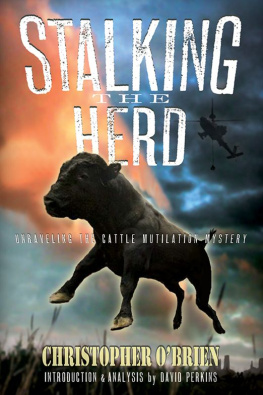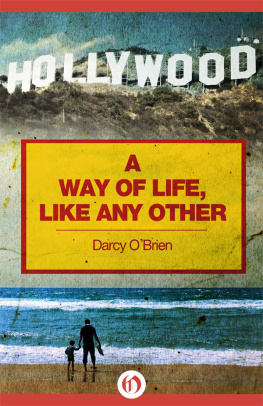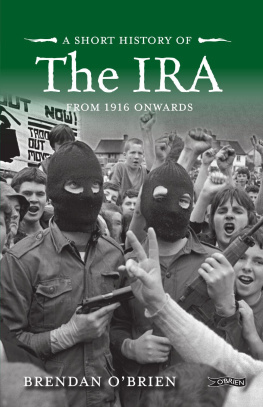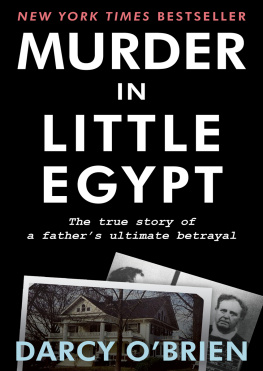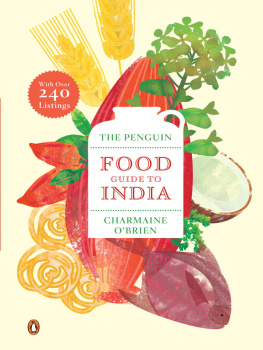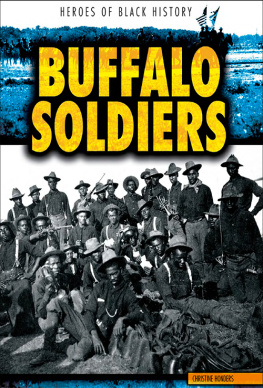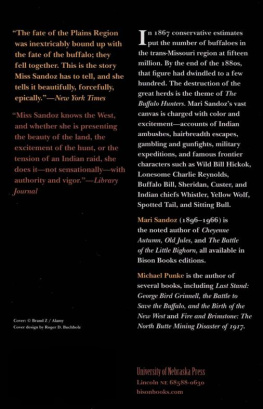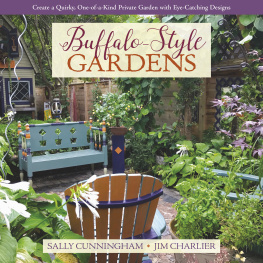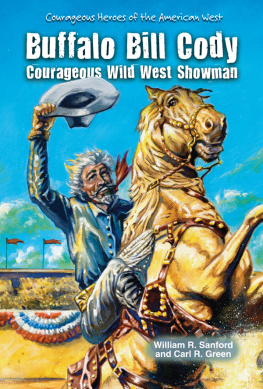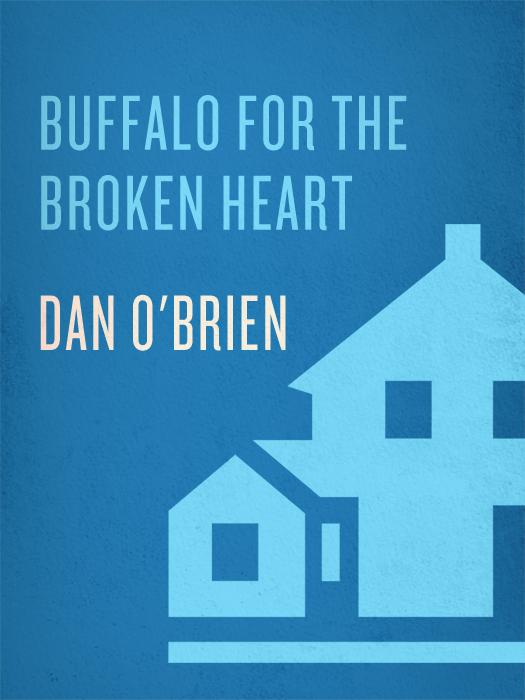
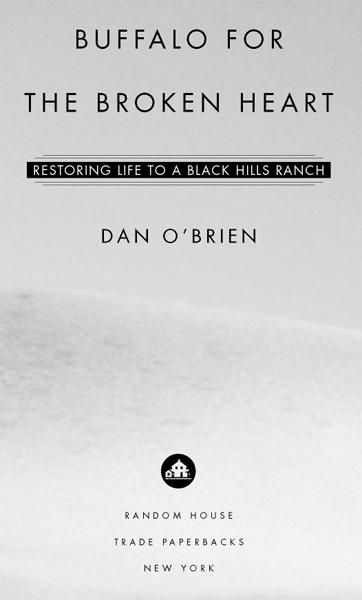
Table of Contents
To my mother, Inez OBrien Senn
who may not have always understood,
but encouraged me anyway
The history of any land begins with nature, and all histories must end with nature.
J. Frank Dobie
This is the most beautiful place on earth.
from Desert Solitaire by Edward Abbey
PRAISE FOR BUFFALO FOR THE BROKEN HEART
One prime virtue of Buffalo for the Broken Heart is its lean prose, a style suited to the taut landscape of the Dakotas.... [OBriens] book is a deft report to readers interested in preservation in the largest sense of the ideawhich is to say conservation, resurrection, restoration, protection, and celebration.
Preservation
Sometimes it seems that the land doesnt want us anymore after all weve done to it. OBrien and his buffalo-raising friends, pioneers for the new future... may win a place in that ecosystem by not trying to wrestle top dollar from it.
Los Angeles Times Book Review
Beautifully written.... With vivid prose, a flair for the dramatic and a great tale to tell, OBrien has written a narrative that is at once a nature book, a memoir and a meditation on mans place in the ecosystem.
Bookpage
Artful, lucid, down-to-earth, poetic, and entertaining, Buffalo forthe Broken Heart is a tale told with uncommon gentleness, decency, and discretion, much humor, and real wisdom. There is enough sorrow to break your heart, and enough joy to mend it again. A classic.
JOHN NICHOLS, author of The Milagro Beanfield War
I love this book. Buffalo for the Broken Heart is elegant, visionary, physically acute, and lives intensely with grace and power. A blue-print for dreams and dreamers.
RICK BASS, author of Colter: The True Story of the Best DogI Ever Had and Where the Sea Used to Be
As a chronicle of life in a lonely and difficult place, OBriens story is timelessand entirely welcome.
Kirkus Reviews
Engaging.... A moving story of one mans love for a place and his desire to make the land whole again.
Publishers Weekly
This book is a phoenix, a thing of beauty rising from the ashes of loss. Dan OBrien tells us important things about the world we live in, and what it means to risk doing the right thing.
KATHLEEN NORRIS, author of The Cloister Walk and Amazing Grace
Dan OBriens Buffalo for the Broken Heart at first appears to be an agrarian fable on the high order of James Galvins The Meadow. But then OBrien picks up the energy, and his urgent, desperate attempts to save his ranch explode on the page.
JIM HARRISON, author of Legends of the Fall
CHAPTER 1
Ive heard that when people in cities have a tough week at work when it looks like they might lose their jobs or theyve made some decision that threatens to ruin their livesthey sometimes wander the city. Ive heard they sit in movie theaters all afternoon, watching the same movie over and over. They walk the open parks or stand on the wharves, staring at ships moving out to sea. The closest movie theater to me is forty miles away, and the ocean is another eighteen hundred miles east. But Im surrounded by a million acres of open country, and when my world seems to be coming apart, I climb into my pickup and drive.
Trying to make a life as a cattle rancher in the economy of the Great Plains makes for a lot of driving, and one late afternoon a dozen Septembers ago it led me to a remote dirt road along the southern boundary of Badlands National Monument. I was thinking about the mortgage payment that would be coming due in October, and the recent, inexplicable dip in cattle prices that would cut my income in half. I drove too fast, and when I came over a dusty rise I nearly ran into an enormous bull buffalo.
He reclined luxuriously in the center of the dirt road, stretched out in the sun like a two-thousand-pound tomcat. With the exception of a whale Id once caught a glimpse of, this was the biggest living thing I had ever seen. By the time Id braked, Id gotten way too close and was struggling to get the gear shift into reverse when he raised his head and looked straight into my eyes. I was close enough to see the grill of my pickup reflected in his round, dark eyes under a mop of dark, curly hair. His head was the size of a dishwasher.
I managed to get the pickup into reverse but, like the wedding guest caught in the stare of the Ancient Mariner, I was frozen in place. We stared at each other for perhaps a minute, and for that minute all my business worries were dwarfed by this dose of reality lying in the road ahead. I focused on one of his eyelashes, long and expressive, as it batted away a yellow butterfly. Leisurely, the head dipped and the legs pulled under the great beast. The short, paintbrush tail whipped in the dust and the bull rocked once, twice, and up onto his feet. He shook like a dog, creating a cloud of dry South Dakota soil that drifted away on the cooling evening breeze. Then he slowly raised the tiny, black hoof of his left rear foot, stretched his head out, and, as if the hoof were a ballet slipper, scratched his neck below the long woolly goatee. He took one last look at me before he moved off the road, into a nearby draw and out of sight.
Even then I sensed that that buffalo signalled something profound, but like the harried city-dweller drawn to ships moving on the ocean, I shook my head, unable to find the link between that dusty old bull and myself. I slipped the transmission into gear and immediately found myself back in the complexities of life. My anxiety had to do with trying to sustain myself in the unpredictable meteorological and economic climate of the northern plains that I am cursed to love.
On the Great Plains the business of sustaining oneself usually ends up having something to do with agriculture, and agriculture usually means cattle grazing. The problem is that cattle grazing is not subject to generally accepted business practices. For example: once every year or so I used to get into a cattle deal together with my neighbor to the south. Wed buy some yearlings and try to put some weight on them for resale, or wed get some old cows that were about ready to give birth and try to make a buck on the calves. Like everyone, wed do our best to buy when the market was low and sell when it was high, and give the cattle good care that would turn our expenses into profit. But our plans almost never worked out and we resigned ourselves to the fact that capitalist enterprise on the Great Plains has its own set of rules. After a while, when we made a decision to try one of these schemes, my neighbor would sigh and say, I sure hope we break even on this deal. I need the money.
In the mid-1980s the cost of fuel, interest rates, and cattle prices all soared. The economy was racing along a rosy highway until, for no apparent reason, cattle prices suddenly stalled, then fell. Everyone who owned a cow hit the windshield of that speeding economy, and the result was damage to the land, our dreams, and our self-esteem. The money we were certain wed make on the cows money that was to go to make the mortgage paymentsvaporized. To paraphrase a popular joke: Whats the last thing that goes through a cowboys mind when he hits the windshield of a speeding economy? His ass.
In some ways, I was luckier than most. Being in good health, and educated to make a living with books, I didnt have to settle for a job in a gas station or a bar. The catch is that there are no jobs for people like me on the Great Plains, so I had to put the ranch in the care of a neighbor while I worked out, chasing jobs as an endangered-species biologist, or as an English teacher on the West Coast and in Colorado. I hated leaving the ranch, because by then, at thirty-nine, I had become addicted to watching the cycles of life on that certain little patch of prairie. But even if I had wanted to get away, I am a middle-class, middle-American kid, and I thought I had to find some way to make the land payments. It never occurred to me to tell the bank to stick the mortgage in their ear and, following in the footsteps of Dust Bowl refugees, go to California and work out for the rest of my life.
Next page

